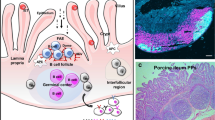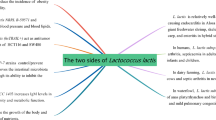Abstract
Post-weaning diarrhea (PWD) caused by enterotoxigenic Escherichia coli (ETEC) is an important disease of newly weaned piglets. ETEC strains commonly express F4 and/or F18 fimbriae that attach to carbohydrate receptors present on the intestinal epithelium during colonization. The disease status in the Ugandan piggeries had previously not been studied. In this cross-sectional sero-survey and clinical outbreak monitoring, we found very high sero-prevalence levels of both anti-F4 (70.5 %) and anti-F18 (73.7 %) antibodies, despite limited cases of clinical outbreaks. Strains isolated from these cases were typically F18+ ETEC. High antibiotic resistance and multi-drug resistance were characteristics of the isolates, with highest resistance level of over 95 % to commonly used antibiotics such as penicillin and tetracycline. We conclude that ETEC infections are widely spread on farms in Central Uganda but clinical disease outbreaks were masked by the management practices on these farms, like the use of extensive antibiotic prophylaxis.



Similar content being viewed by others
References
Barth, S., Schwanitz, A. and Bauerfeind, R., 2011. Polymerase chain reaction-based method for the typing of F18 fimbriae and distribution of F18 fimbrial subtypes among porcine Shiga toxin-encoding Escherichia coli in Germany, Journal of Veterinary Diagnostic Investigation , 23, 454--64.
Casewell, M., Friis, C., Marco, E., McMullin, P. and Phillips, I., 2003. The European ban on growth-promoting antibiotics and emerging consequences for human and animal health, Journal of Antimicrobial Chemotherapy, 52, 159--161.
Coddens, A., Diswall, M., Angström, J., Breimer, M. E., Goddeeris, B., Cox, E. and Teneberg, S., 2009. Recognition of blood group ABH type 1 determinants by the FedF adhesin of F18-fimbriated Escherichia coli, The Journal of Biological Chemistry, 284, 9713--9726.
De la Fé Rodríguez, P. Y., Coddens, A., Del Fava, E., Cortiñas Abrahantes, J., Shkedy, Z., Maroto Martin, L. O. and Goddeeris, B. M., 2011. High prevalence of F4+ and F18+ Escherichia coli in Cuban piggeries as determined by serological survey, Tropical Animal Health and Production, 43, 937--946.
DebRoy, C., Roberts, E., Scheuchenzuber, W., Kariyawasam, S. and Jayarao, B. M., 2009. Comparison of genotypes of Escherichia coli strains carrying F18ab and F18ac fimbriae from pigs, Journal of Veterinary Diagnostic Investigation, 21, 359--364.
EUCAST, 2014. The European Committee on Antimicrobial Susceptibility Testing. Breakpoint tables for interpretation of MICs and zone diameters, Version 4.0, 2014.
Fairbrother, J. M., Nadeau, É. and Gyles, C. L., 2005. Escherichia coli in postweaning diarrhea in pigs: an update on bacterial types, pathogenesis, and prevention strategies, Animal Health Research Reviews, 6, 17--39.
Fairbrother, J.M. and Gyles C.L., 2006. Escherichia coli infections. In: Diseases of swine, (Blackwell Publishing, Iowa).
Frydendahl, K., 2002. Prevalence of serogroups and virulence genes in Escherichia coli associated with postweaning diarrhoea and edema disease in pigs and a comparison of diagnostic approaches, Veterinary Microbiology, 85, 169--182.
Garabal, J.I., Vázquez, F., Blanco, J., Blanco, M. and González, E.A., 1997. Colonization antigens of enterotoxigenic Escherichia coli strains isolated from piglets in Spain, Veterinary Microbiology, 54, 321--328.
Grange, P.A., 2002. Evaluation of receptor binding specificity of Escherichia coli K88 (F4) fimbrial adhesin variants using porcine serum transferrin and glycosphingolipids as model receptors, Infection and Immunity, 70, 2336--2343.
Imberechts, H., De Greve, H., Schlicker, C., Bouchet, H., Pohl, P., Charlier, G. and Van Damme, J., 1992a. Characterization of F107 fimbriae of Escherichia coli 107/86 which causes edema disease in pigs and nucleotide sequence of the F107 major fimbrial subunit gene fedA, Infection and Immunity, 60, 1963--1971.
Imberechts, H., De Greve, H. and Lintermans, P., 1992b. The pathogenesis of edema disease in pigs, Veterinary Microbiology, 31, 221--233.
Laine, T.M., Lyytikäinen, T., Yliaho, M. and Anttila, M., 2008. Risk factors for post-weaning diarrhoea on piglet producing farms in Finland, Acta Veterinaria Scandinavica, 50, 21.
Liu, W., Yuan, C., Meng, X., Du, Y., Gao, R., Tang, J., and Shi, D., 2014. Frequency of virulence factors in Escherichia coli isolated from suckling pigs with diarrhoea in China, Veterinary Journal, 199, 286--289.
Madoroba, E., Van Driessche, E., De Greve, H., Mast, J., Ncube, I., Read, J. and Beeckmans, S., 2009. Prevalence of enterotoxigenic Escherichia coli virulence genes from scouring piglets in Zimbabwe, Tropical Animal Health and Production, 41, 1539--1547.
Magiorakos, A.P., Srinivasan, A., Carey, R. B., Carmeli, Y., Falagas, M. E., Giske, C. G., Harbarth, S., Hindler, J. F., Kahlmeter, G., Olsson-Liljequist, B., Paterson, D.L., Rice, L.B., Stelling, J., Struelens, M.J., Vatopoulos, A., Weber, J T. and Monnet, D.L., 2012. Multidrug-resistant, extensively drug-resistant and pandrug-resistant bacteria: an international expert proposal for interim standard definitions for acquired resistance, Clinical Microbiology and Infection: The Official Publication of the European Society of Clinical Microbiology and Infectious Diseases, 18, 268–81.
Mohlatlole, R.P., Madoroba, E., Muchadeyi, F.C., Chimonyo, M., Kanengoni, A.T. and Dzomba, E.F., 2013. Virulence profiles of enterotoxigenic, shiga toxin and enteroaggregative Escherichia coli in South African pigs, Tropical Animal Health and Production, 45, 1399--405.
Moonens, K., Bouckaert, J., Coddens, A., Tran, T., Panjikar, S., De Kerpel, M., Cox, E., Remaut, H. and De Greve, H., 2012. Structural insight in histo-blood group binding by the F18 fimbrial adhesin FedF, Molecular Microbiology, 86, 82--95.
Sambrook, J. and Russell, D., 2012. Molecular cloning: A Laboratory Manual, Cold Spring Habor Laboratory Press, New York.
Smeds, A., Hemmann, K., Pelkonen, S., Palva, A. and Imberechts, H., 2001. Characterization of the adhesin of Escherichia coli F18 fimbriae, Infection and Immunity, 69, 1–6.
Steinfeld, H., Wassenaar, T. and Jutzi, S., 2006. Livestock production systems in developing countries: status, drivers, trends, Revue Scientifique et Technique de l’Office International des Epizooties, 25, 505–516
Tiels, P., Verdonck, F., Smet, A., Goddeeris, B. and Cox, E., 2005. The F18 fimbrial adhesin FedF is highly conserved among F18+ Escherichia coli isolates, Veterinary Microbiology, 110, 277–283.
Toledo, A., Gómez, D., Cruz, C., Carreón, R., López, J., Giono, S. and Castro, A.M. 2012. Prevalence of virulence genes in Escherichia coli strains isolated from piglets in the suckling and weaning period in Mexico, Journal of Medical Microbiology, 61, 148--56.
Tseng, M., Fratamico, P.M., Bagi, L., Delannoy, S., Fach, P., Manning, S. D. and Funk, J. A., 2014. Molecular Characterization of Shiga Toxin-Producing E. coli (STEC) from Finishing Swine in a Longitudinal Study, Applied and Environmental Microbiology, doi:10.1128/AEM.01761
Van den Broeck, W., Cox, E. and Goddeeris, B.M., 1999. Seroprevalence of F4+ enterotoxigenic Escherichia coli in regions with different pig farm densities, Veterinary Microbiology, 69, 207--216.
Van den Broeck, W., Cox, E., Oudega, B. and Goddeeris, B.M., 2000. The F4 fimbrial antigen of Escherichia coli and its receptors, Veterinary Microbiology, 71, 223--244.
Zhang, W., Zhao, M., Ruesch, L., Omot, A. and Francis, D., 2007. Prevalence of virulence genes in Escherichia coli strains recently isolated from young pigs with diarrhea in the US, Veterinary Microbiology, 123, 145--152.
Acknowledgments
The authors are grateful to Dr. Hein Imberechts (CODA, Belgium) and Dr. Bruno Goddeeris (KULeuven, Belgium) for the reference E. coli strains. Dr. Bruno Goddeeris (KULeuven, Belgium) also provided the negative control swine sera. This work was funded by VLIR-UOS (Vlaamse Interuniversitaire Raad) under the Interuniversity Development Cooperation program.
Conflict of interest
The authors declare that they have no conflict of interest.
Author information
Authors and Affiliations
Corresponding author
Electronic supplementary material
Below is the link to the electronic supplementary material.
ESM 1
(PDF 958 kb)
Rights and permissions
About this article
Cite this article
Okello, E., Moonens, K., Erume, J. et al. Enterotoxigenic Escherichia coli strains are highly prevalent in Ugandan piggeries but disease outbreaks are masked by antibiotic prophylaxis. Trop Anim Health Prod 47, 117–122 (2015). https://doi.org/10.1007/s11250-014-0694-2
Received:
Accepted:
Published:
Issue Date:
DOI: https://doi.org/10.1007/s11250-014-0694-2




